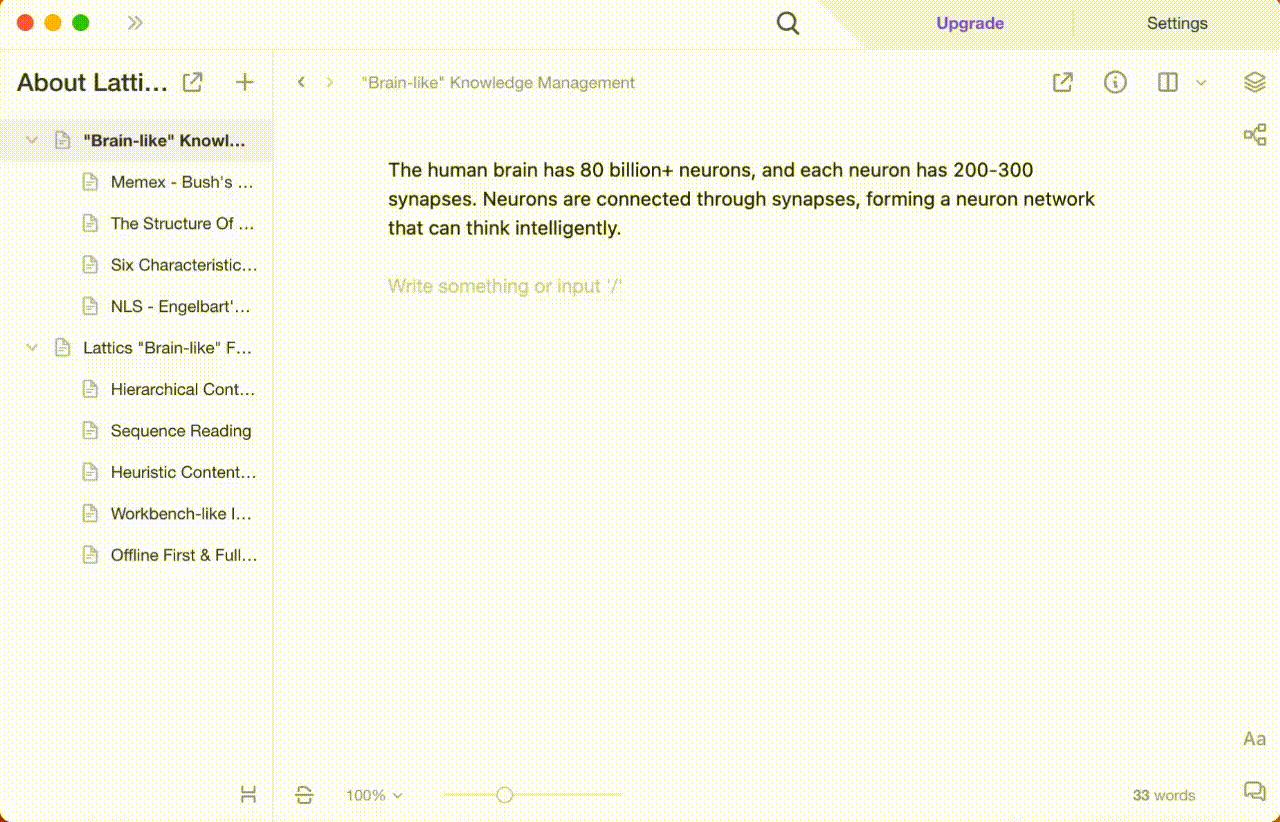Lattics Review: Transform Your Note-Taking Experience!
In-Depth Review and Analysis of Lattics tool.

Ever Since I read the book “Building a Second Brain” by Tiago Forte, my perspective on note-taking has changed completely.
It now feels so cool and exciting to me.
Thanks to the release of popular tools like Notion, Evernote, and Obsidian, note-taking has never been easier.
These tools have revolutionised the way we capture, organise, and access information.
First, I used to use Evernote, then I switched to Obsidian, and then to Notion, until recently, when I discovered a crazy note-taking tool called “Lattics”.
The tool claims that it can even store and manage notes like our brain.
Is it really that good? Let’s find out.
What is Lattics?

Lattics is a brand-new note-taking tool that helps you mind map and capture ideas like a pro.
It makes use of the famous Zettlekasten method, which helps you capture your thoughts and ideas in a structural manner.
How to Use Lattics for Ultra-Productivity?
In this part, I am not diving into the basics. For that, you can watch these tutorials.
Instead, I’ll cover how to use Lattics to stay ultra-productive throughout the day.
Flashcard Integration
What are flashcards?
Flashcards are small sets of information usually created for quick information recall.
How to create a flashcard in Lattics?

There’s a shortcut key for these as well; just press Ctrl/Cmd + N to create and Ctrl/Cmd + D to delete the text or card.
How is it useful?
It is said that the more time we invest in making the flashcards, the less time we have to spend understanding the hard concepts.
Most of the information on the internet is trash. So flashcards help you capture and memorise only the most important pieces of information.
Atomic Notes using the Zettlekasten Method
What are atomic notes?
Atomic notes are the most specific form of information that focuses on only one concept or idea.
Here we’re creating atomic notes using the famous Zettlekasten Method.
Here’s how it looks:

As shown above, you can drag and place it anywhere you like.
The aim is to create a branch of ideas focusing on only one concept or thought.
Also users can create their own wiki base by dragging and dropping the cards right away. Pretty cool right!
How do I create amazing mind maps?
Here’s a sneak peek at how you can utilise this feature to create the most beautiful mind maps for both your study and work.

Organise everything in one place.
The ability to organise everything in one place makes it even more special.
- Central Knowledge Repository: You don’t need to find everything from scratch. Store it once and take advantage of it again and again.
- Interconnected Network: With its bi-directional linking functionality, you can build also connections between related concepts.
- Better Discoverability: There’s a search bar at the top to help you navigate to your desired document or card.
Aerial View
It provides a high-level overview of your notes or documents.
To access this feature, you’ve got to open mind map mode and select Aerial View.
After enabling it, you can see the complete list of interconnected documents and flashcards, just like in the Obsidian app.
Also there's a cool feature about it. No need to open mind map mode again to specifically edit your notes and flashcards. Edit it there and the changes will be applied right away to your documents.

Building a Second Brain using the Lattics App
CODE
It stands for capture, organise, distil, and express.
- Capture: Creating blocks and flashcards to capture quick information
- Organise: Use the bi-directional linking feature to easily locate the captured notes.
- Distil: Create a separate document with the name “Distilled” to save the most important flashcards and notes for future use.
- Express: It’s time to become creative. Make use of those distilled notes to create something valuable.
PARA
PARA stands for Projects, Areas, Resources, and Archives.
Create three folders on your Lattics app dashboard: projects, areas, and resources.
- Projects: It contains all the active projects that you’re currently working on. Example: Gaining muscle, learning to play the guitar, building a writing habit, etc.
- Areas: It contains all the broad topics associated with your current projects. Example: Building a writing habit fits into the area “productivity”, gaining muscle fits into the area “health”, etc.
- Resources: This is the most raw form of information, containing everything you need to work on a particular area or project. Example: links, media, spreadsheets, etc.
- Archives: There is no need to create an archive folder. Lattics already have a trash can option at the bottom to help you put the unwanted information there.
So this is how you can create a second brain system using this app for ultra-productivity. Both methods are described in the famous book “Building a Second Brain” by Tiago Forte.
Lattics: Pros and Cons
Pros:
- Simple and easy-to-use.
- Beautiful design.
- Bi-directional linking functionality.
- Typewriter mode for writers.
- Drag-and-drop compatibility.
- High-quality document export.
- Multi-column layout (bi-comparation).
- Atomic notes functionality for brainstorming.
- Zotero app integration
- Tutorials are available for each feature.
Cons:
- May get stuck sometimes.
- Limited integrations as the product is quite new.
- Not supported on Android devices.
Lattics for Students and Professionals
Lattics for Students:
Highly beneficial tool for students.
First Scenario: Suppose a student wants to create a research paper on a particular topic.
Then he or she can start brainstorming on the mind-mapping tool. Gather information in a particular document and can start working immediately.
Second Scenario: Suppose a student wants to study for his or her examination the very next day.
Then he or she can create flashcards to quickly recall hard topics and concepts.
Also, he or she can create a mind map of that information to break down hard topics into simpler sub-topics.
Lattics for Professionals:
A lifesaver tool for working professionals and creators.
As a writer, I always have to stay up-to-date with my work, style, and information.
So this tool helps a lot with this.
As discussed above, I can make use of the CODE and PARA methods to create a highly customised second brain system.
A mind-mapping tool helps me brainstorm ideas, while flashcards help me create an outline on the particular topic.
There are numerous ways to use this tool. It all depends on how creative you are.
Pricing
I believe that a free plan is sufficient for individuals. But if you’re working in an organization where you need a team, then go with the paid plan.

Final Thoughts
In my opinion, Lattics is a wonderful tool for both students and working professionals.
As I said earlier, I am slowly switching to this tool from Notion due to its simple and awesome functionality.
So it’s a must-recommended product to use from my side.
Thank you for reading :)
Ask your doubts in the comments section. I’ll be more than happy to answer them.
P.S. If You Want to Support My Work as a Writer, Consider Signing Up to Become a Medium Member for Unlimited Access. Also, if you don’t want to miss any of my stories, Join Me Here. Have A Nice Day. Love You All.
